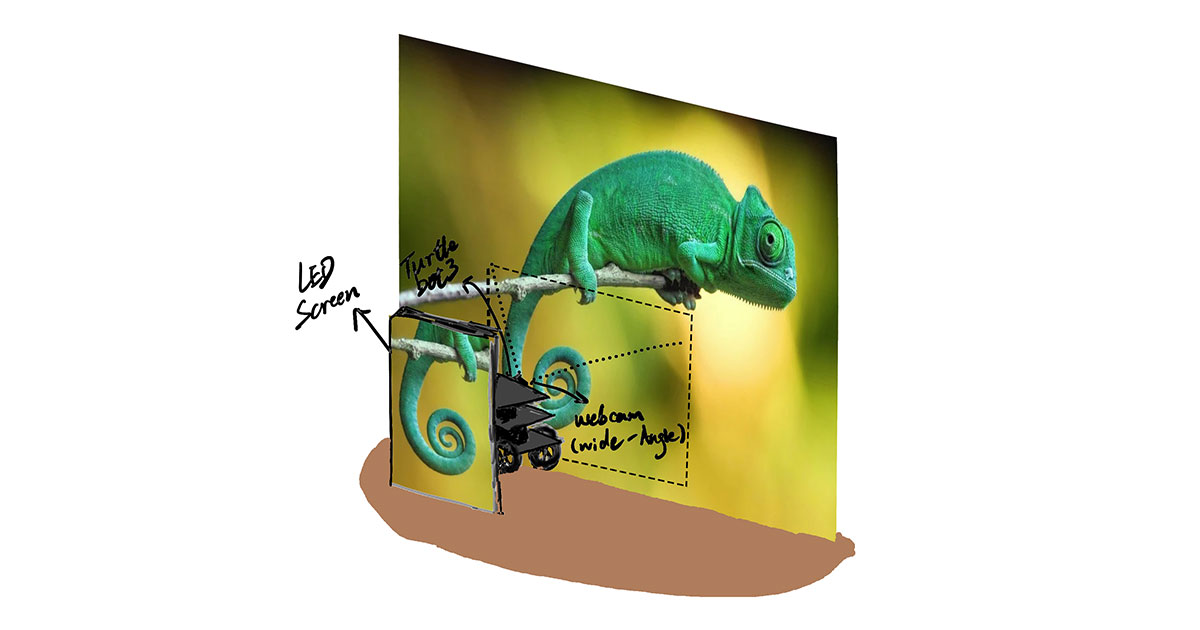Making a Robot 'Disappear'
Tim Jin (MSR '21) reflects on his independent project for Northwestern Engineering's Master of Science in Robotics (MSR) program and what he learned from trying to make a robot emulate a chameleon.

As Tim Jin considered options to pursue for his independent project in Northwestern Engineering's Master of Science in Robotics (MSR) program, his mind turned to a chameleon. The reptile changes the color of its outer appearance to moderate its body temperature and communicate with other chameleons, but its color-changing can also be used for camouflage. Jin (MSR '21) wanted to explore how to make a mobile robot camouflage with its surroundings.
Jin used a TurtleBot3 Burger, a wide-angle camera, and an LED screen the size of the robot for the project.
"The idea is when the robot moves in front of an image, the robot will process the part of the image captured by the camera and display it on the LED screen in front," Jin said. "That way, when someone looks at the LED screen in front, the robot will appear to be invisible."
Students can select the topic for their independent project based on their interests, and the experience is designed to prepare them for their larger final MSR project. Jin thought the opportunity to explore bioinspired robotics would be beneficial for the rest of his time in the program as well as professionally after graduation.
Once Jin had the idea for the project, he had to figure out how to use the 64x64 RGB LED matrix panel to "hide" the TurtleBot. He used computer vision algorithms to analyze the image captured by the camera and display similar colors on the LED screen, then fused those algorithms with mechatronics to bring the project together. He was impressed by how powerful modern computer vision processing is and determined its potential applications are virtually limitless.
To make his project work, Jin relied on lessons learned in MSR about the Robotic Operating System (ROS) to program the TurtleBot3. His time in Introduction to Mechatronics prepared him to design the robot and assemble it, and his past experiences using computer vision for other MSR projects helped him design the algorithms he used for the project.
Though the technical understanding he developed was important, Jin said the ultimate lesson he learned from his independent project came down to project management. When starting a project from scratch with a limited time to complete it, it's critical to be able to plan out the project timeline. That includes establishing weekly goals while also creating enough buffer time for required changes or to plan updates.
Jin is proud he took a concept and turned it into a viable robotic system. He is looking forward to expanding on the project or perhaps using it as inspiration for a more elaborate bioinspired robotic system in the future.
"Part of what is great about this project is that it feels like it's out of a science fiction movie while still synthesizing many different capabilities needed in industrial robotics settings," said Professor Todd Murphey, director of the MSR program. "Projects like this are fun and attract the attention of companies with challenging robotics problems.”

